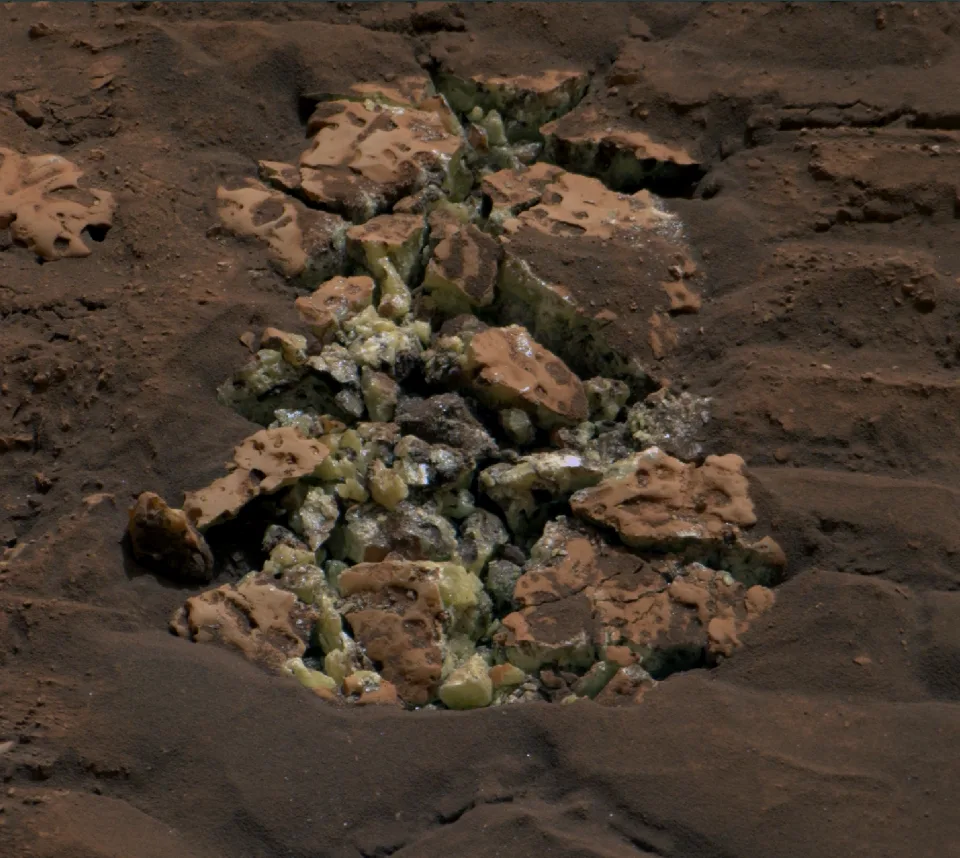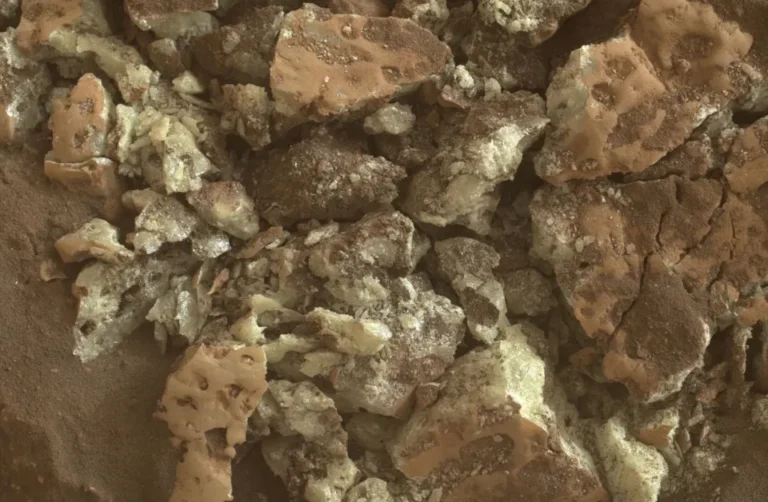According to the statement of one of the project scientists, “It shouldn’t be there, so now we have to explain it.”
Scientists from NASA have reported that pure sulfur has been discovered on Mars for the very first time. This discovery was made when the Curiosity rover accidentally discovered a cluster of yellow crystals while it was driving over a rock formation. Additionally, it appears that the region is brimming with it. Despite the fact that minerals that include sulfur have been found on the Red Planet, elemental sulfur on its own has never been discovered there before. This discovery comes as a complete surprise. The National Aeronautics and Space Administration (NASA) states that “it forms in only a narrow range of conditions that scientists haven’t associated with the history of this location.”
The rock was broken apart by Curiosity on May 30 while it was traveling through a location known as the Gediz Vallis channel, which was surrounded by boulders that were very similar to the one that was broken open. It is believed that water and debris flows were responsible for carving out the canal a very long time ago. “Finding a field of stones made of pure sulfur is like finding an oasis in the desert,” said Ashwin Vasavada, the project scientist for the Curiosity spacecraft. Since it shouldn’t be there, we need to provide an explanation for it now. What makes planetary exploration so thrilling is the fact that it can lead to the discovery of unusual and unexpected phenomena.

After the team had discovered the yellow crystals, they proceeded to take a closer look at them by using a camera that was mounted on the robotic arm of Curiosity. Due to the fact that the parts of the granite that it had broken were too fragile for drilling, the rover proceeded to take a sample from a different rock that was located nearby. Curiosity is outfitted with tools that enable it to examine the composition of rocks and soil, and according to NASA, its Alpha Particle X-Ray Spectrometer (APXS) confirmed that it had discovered elemental sulfur.

